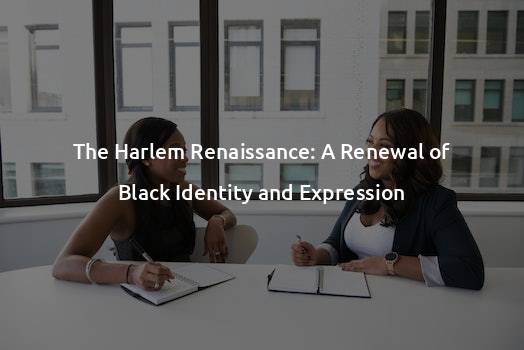The Harlem Renaissance: A Renewal of Black Identity and Expression
The Harlem Renaissance: A Renewal of Black Identity and Expression
The 1920s and 1930s witnessed an extraordinary cultural movement in the heart of New York City, known as the Harlem Renaissance. This period, also referred to as the “New Negro Movement,” marked a significant renewal of black identity and expression in American society. With its vibrant arts, literature, music, and activism, the Harlem Renaissance challenged societal norms, ultimately shaping a new narrative for African Americans. In this article, we will explore the key elements that characterized this movement and its enduring impact on American history.
The Rise of Harlem
In the early 20th century, Harlem underwent a profound demographic shift, attracting a wave of African Americans from various parts of the country. This influx of black individuals seeking economic opportunities and escape from racial oppression created a unique cultural environment. Harlem became a melting pot of diverse perspectives, experiences, and talents that set the stage for the Renaissance.
Expressing Identity through Art
The Harlem Renaissance was marked by an explosion of artistic expression across various disciplines. Visual artists like Aaron Douglas, Jacob Lawrence, and Romare Bearden showcased the richness of African American culture through bold and innovative styles. Their artwork celebrated black heritage and challenged stereotypes, conveying the complexities of the African American experience.
Literature played a central role in the Renaissance as well. Writers such as Langston Hughes, Zora Neale Hurston, and Claude McKay emerged as prominent figures, voicing the struggles and aspirations of black communities through poetry, novels, and essays. Their works illuminated the realities of racial injustice and celebrated black resilience and pride.
Musical Revolution
One of the most significant and enduring legacies of the Harlem Renaissance is the revolution in music. Jazz, the quintessential American genre, emerged from the cultural fusion in Harlem. Legendary musicians such as Louis Armstrong, Duke Ellington, and Bessie Smith revolutionized the world of music, where their artistry became synonymous with the spirit of the era.
Jazz encapsulated the essence of the Harlem Renaissance: experimentation, improvisation, and freedom of expression. It celebrated the complexities of black life, while also acting as a unifying force that transcended racial boundaries. The popularity of jazz spread beyond Harlem, impacting the entire nation and influencing subsequent musical movements.
Activism and Social Progress
The Harlem Renaissance was not solely focused on artistic expression; it also served as a platform for activism and social progress. Organizations like the National Urban League and the NAACP played crucial roles in advocating for civil rights and combating racial discrimination. Intellectuals, artists, and community leaders united to address the social, political, and economic issues faced by African Americans.
The Harlem Renaissance empowered black individuals to assert their voices and challenge systemic racism. It was a catalyst for change, paving the way for future movements in the pursuit of racial equality.
TLDR;
The Harlem Renaissance, a cultural movement flourishing in the 1920s and 1930s in Harlem, New York, marked a critical chapter in African American history. This period witnessed a renewed black identity and expression through art, literature, and music. Artists like Jacob Lawrence and Langston Hughes celebrated African American heritage and challenged societal norms, while musicians such as Louis Armstrong revolutionized the world of jazz. The Harlem Renaissance also served as a platform for activism and social progress, empowering black voices and paving the way for future movements fighting for racial equality.







